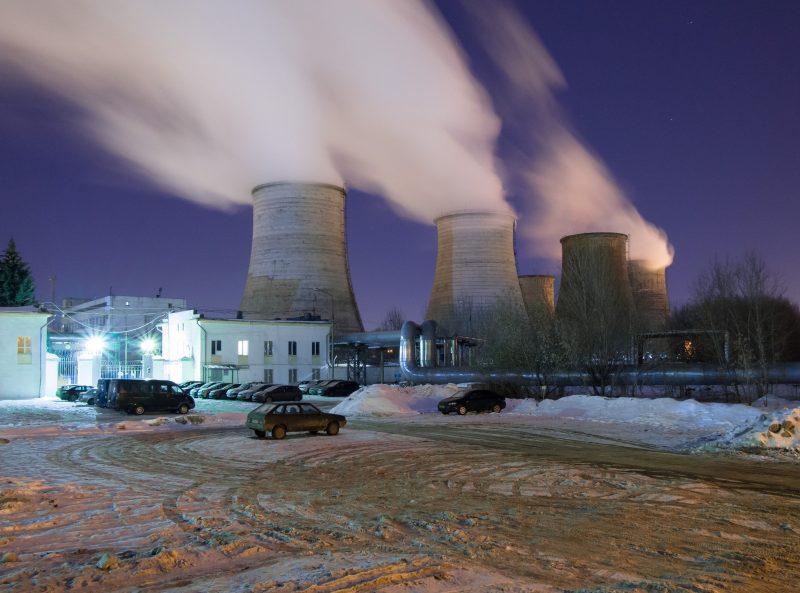[ad_1]
The alternative energies or, more properly said, alternative energy sources are those techniques and procedures aimed at obtaining usable energy other than those considered classic or traditional, such as the burning of fossil fuels (oil, coal, natural gas). For instance: wind power, geothermal power, wave power.
The latter, developed from the Industrial Revolution, continues to be the most widely used in the world, but due to its environmental consequences and the instability of its raw material markets, the possibility of developing safer, more reliable and economical energies is being pursued. These would be, in that sense, alternative energies.
There is no unanimity as to what methods of obtaining energy make up this category of “alternatives”, since some use the term as a synonym for ecological energies or “green” energies, while for others it is enough that they are different from burning fossil fuels, such as hydroelectric energy or nuclear energy.
This term arose in the decade of 70’s, when environmental concerns and the evidence of technological impact on the planet and in the alteration of animal and plant ecosystems began to become evident to man.
Classification of alternative energies
Alternative energy sources, broadly speaking, can be classified into two categories:
- Renewable or sustainable energy sources. Renewable energy sources are those that use inexhaustible materials or resources or given in nature, with a minimal impact on the environment or even taking advantage of substances that would otherwise be given to the ecosystem. They have the disadvantage of not being as productive.
- Atomic energy sources. In this separate category is the controversial nuclear energy, which represents a difficult case, since it takes advantage of non-renewable resources (atomic reaction material such as uranium) and also entails considerable environmental hazards, such as the disposal of radioactive waste and possible nuclear accidents in the plants. Still, it is reliable and has less of an impact on climate change than burning hydrocarbons.
Examples of alternative energies

- Wind power. Wind energy has accompanied man since ancient times: flour mills are a perfect example. The aim is to take advantage of the wind thrust in areas where it is particularly strong and constant, by means of a system of blades later linked to an electric generator. Thus, the mechanical energy of the wind is transformed into potential and then electrical energy. But of course, the quantities generated are low and therefore it lacks the potential to supply large urban conglomerates.
- Geothermal energy. As its name indicates, this type of energy takes advantage of the heat emanating from the planet itself, which, having a heart of iron and other molten metals, generates large amounts of heat as we enter the earth. This energy can be used to heat homes through water systems, but in volcanic areas or areas with a lot of magmatic activity it can even be used to boil water and generate a certain amount of electricity.
- Hydroelectric power. The most popular of renewable energies, it requires just one waterfall (natural, such as waterfalls, waterfalls or rivers; or artificial, such as dams and hydroelectric complexes with reservoirs) to mobilize the generators that will produce the electric current. Except for the environmental and economic impact that occurs when installing these plants or when damming entire rivers and flooding slopes, and the effect of possible droughts that accompany climate change, this mechanism has so far proven to be reliable, safe and relatively ecological.
- Biomass energy. Also called biofuel energy or even bioenergy, it is about obtaining more or less ecological fuels (with a much lower environmental impact than fossil fuels) and above all cheaper, from the transformation of organic matter into combustible alcohols (biodiesel, bioethanol, biogas, etc.). For this, agricultural waste, organic waste material and many other substances of plant or animal origin can be used that are subjected to an anaerobic fermentation process.
- Seawater energy. Tidal energy is what takes advantage of the movement of the tides, in a similar way to how wind works. There are tidal mills that convert the kinetic energy of water currents into usable electrical energy. However, the amount of energy generated, in contrast to the economic investment and the environmental impact of the installation of these generating plants makes it a model with very little penetration today.
- Fission nuclear energy. One of the two forms of atomic energy known to man, consists of the separation or splitting of the atom of a heavy material such as uranium. This generates a chain reaction that releases enormous amounts of heat energy and radiation, as well as dangerous materials such as plutonium; but properly controlled they can be used to boil water whose steam mobilizes turbines and generates electricity. Of this nature, but out of control, was the reaction of the atomic bombs on the Japanese cities of Hiroshima and Nagasaki in 1945.
- Fusion nuclear energy. The second known form of nuclear reaction is the one used to make the dreaded H-bomb or hydrogen bomb. This is carried out by a mechanism contrary to fission, that is, the joining of two atoms of a light element such as hydrogen, releasing even more energy and radiation, as well as byproducing heavier elements such as helium. It is similar to the process that occurs within the stars in the sky.
- Photovoltaic Solar Energy. Harnessing the energy that the sun constantly radiates is one of humanity’s great hopes in times of climate change. In the case of photovoltaic solar energy, this requires the installation of large solar panels in important areas of territory, to be able to capture as much solar radiation as possible and through a photovoltaic cell that operates more or less like a battery, take advantage of the impact of photons to produce a permanent electric field. It has the limitation of requiring sunny climates over large areas of territory.
- Thermal solar energy. Also known as solar thermal energy, it operates in a similar way to photovoltaic energy but to produce heat instead of electricity: heat that can be used to cook food, heat a room or even to power absorption refrigeration machines, which require heat instead of electricity. It has the same advantages and disadvantages, however, of the previous case.
- Wave energy. This is the name given to the energy obtained from the use of the force (mechanical energy) of the waves of the sea: it is one of the types of renewable energy most studied at the beginning of the XXI century, since the predictability of marine processes and their combinibility with Wind power offers hope for sustainable energy for the future.

[ad_2]
